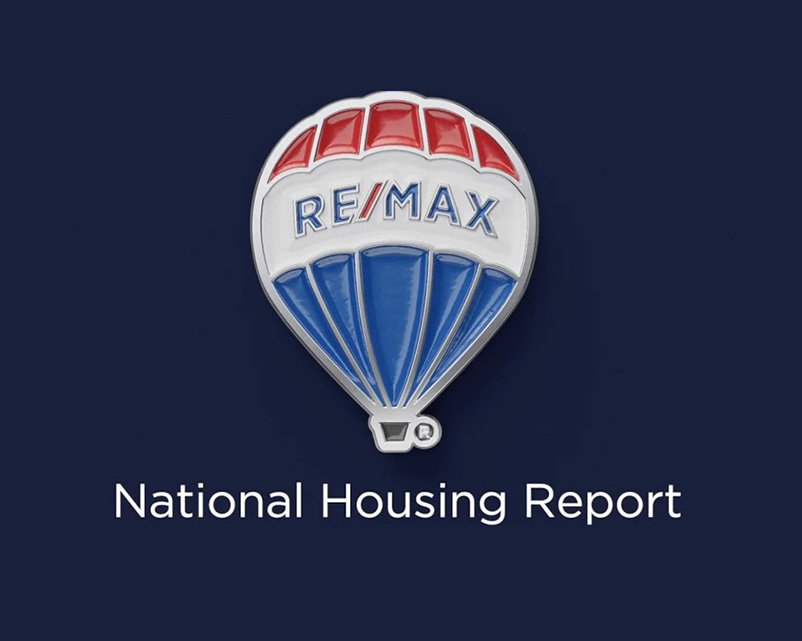New Listings Soar Higher as Spring Ramp-Up Approaches
In what could be a good sign for buyers, the number of newly listed homes in January was a whopping 66.3% higher than in December and 21.5% higher than January 2023 across the 50 metro areas surveyed.
The 21.5% year-over-year increase in new listings reversed a multi-year January trend, as new listings dropped 5.1% from January 2022 to January 2023 and 8.1% from January 2021 to January 2022. The dramatic 66.3% month-to-month increase in new listings was also significantly higher than the past two December-to-January jumps – 39.8% to start 2023 and 24.7% to begin 2022.
The surge in new listings was combined with year-over-year increases in closed sales and inventory, illustrating that January’s housing stats could bode well for the typical spring uptick in home sales this year.
January home sales were 2.5% higher than January 2023, although they were down 19.1% from December, a slightly smaller post-holiday drop than the past two years. January inventory increased 1.7% over January 2023, ending a seven-month streak of year-over-year declines. The median sales price of $405,000 was 5.2% (or $20,000) higher than January 2023 and unchanged from December.
“It was encouraging to see the surge in new listings, as January stats can be a sign of things to come,” said Nick Bailey, President and CEO of RE/MAX, LLC. “Potential buyers and sellers considering a move this year should prepare by securing a qualified agent who can help them understand the local market and help them through the process. If new listings continue to emerge and interest rates drop a bit over time, 2024 could be a year of great opportunity for buyers and sellers.”
Lori Galarza, Broker/Owner of RE/MAX Central in Las Vegas, Nevada, said buyers and sellers in her market had to come ready in January. “Las Vegas is very desirable right now, thanks to a relocation boom from Californians who are looking for a lower cost of living. That desirability drove January sales and pushed days on market down. I expect the trend to continue as we are starting to see more activity with buyers who are feeling more confident about purchasing this year.”
Other metrics of note:
• Homes took an average of 45 days to sell – one day less than December and three days less than January 2023.
• January 2024 sales averaged 98% of the listing price, the same as in December and up from 97% one year ago.
• January’s Months’ supply of inventory was 2.1, compared to 2.4 in December and 2.0 one year ago.
Highlights and local market results for January include:
New Listings
Of the 50 metro areas surveyed in January 2024, the number of newly listed homes was up 66.3% compared to December 2023 and up 21.5% compared to January 2023. The markets with the biggest year-over-year increase in new listings percentage were Honolulu, HI at +73.4%, Charlotte, NC at +72.8%, followed by a tie between Bozeman, MT and Milwaukee, WI at +66.4%. The markets with the biggest decrease in year-over-year new listings percentage were Anchorage, AK at -18.9%, Wichita, KS at -8.2%, and Baltimore, MD -6.9%.
Closed Transactions
Of the 50 metro areas surveyed in January 2024, the overall number of home sales was down 19.1% compared to December 2023 and up 2.5% compared to January 2023. The markets with the biggest decrease in year-over-year sales percentage were Wichita, KS at -15.7%, Dover, DE at -13.3%, and New Orleans, LA at -11.7%. The markets with the biggest increase in year-over-year sales percentage were Salt Lake City, UT at +20.0%, Dallas, TX at +14.2%, and Las Vegas, NV at +12.4%.
Median Sales Price – Median of 50 metro area prices
In January 2024, the median of all 50 metro area sales prices was $405,000, flat compared to December 2023 and up 5.2% from January 2023. The markets with the biggest year-over-year increase in median sales price were Trenton, NJ at +16.7%, Bozeman, MT at +16.6%, and Baltimore, MD at +13.8%. The markets with the biggest year-over-year decrease in median sales price were Coeur d’Alene, ID at -10.6%, Raleigh, NC at -3.3%, and Anchorage, AK at -2.7%.
Close-to-List Price Ratio – Average of 50 metro area prices
In January 2024, the average close-to-list price ratio of all 50 metro areas in the report was 98%, flat compared to December 2023 and up compared to 97% in January 2023. The close-to-list price ratio is calculated by the average value of the sales price divided by the list price for each transaction. When the number is above 100%, the home closed for more than the list price. If it’s less than 100%, the home sold for less than the list price. The metro areas with the lowest close-to-list price ratio were Miami, FL at 93%, Bozeman, MT at 94%, and New Orleans, LA at 95%. The metro areas with the highest close-to-list price ratios were Hartford, CT at 102% and Trenton, NJ at 101%.
Days on Market – Average of 50 metro areas
The average days on market for homes sold in January 2024 was 45, down one day compared to the average in December 2023 and down three days compared to January 2023. The metro areas with the lowest days on market were a tie between Baltimore, MD and Milwaukee, WI at 16, followed by another tie between Trenton, NJ and Washington, DC at 18. The highest days on market averages were in Fayetteville, AR at 81, Coeur d’Alene, ID at 79, and Des Moines, IA at 78. Days on market is the number of days between when a home is first listed in an MLS and a sales contract is signed.
Months’ Supply of Inventory – Average of 50 metro areas
The number of homes for sale in January 2024 was down 2.4% from December 2023 and up 1.7% from January 2023. Based on the rate of home sales in January 2024, the months’ supply of inventory was 2.1, down from 2.4 in December 2023, and up from 2.0 in January 2023. In January 2024, the markets with the lowest months’ supply of inventory were Seattle, WA at 0.7, Manchester, NH at 0.9, followed by a three-way tie between Albuquerque, NM, Trenton, NJ, and Washington, DC at 1.0. The markets with the highest months’ supply of inventory were Miami, FL at 5.0, New Orleans, LA at 4.4, and Bozeman, MT at 3.9.
As one of the leading global real estate franchisors, RE/MAX, LLC is a subsidiary of RE/MAX Holdings (NYSE: RMAX) with more than 140,000 agents in over 9,000 offices and a presence in more than 110 countries and territories. Nobody in the world sells more real estate than RE/MAX, as measured by residential transaction sides. RE/MAX was founded in 1973 by Dave and Gail Liniger, with an innovative, entrepreneurial culture affording its agents and franchisees the flexibility to operate their businesses with great independence. RE/MAX agents have lived, worked and served in their local communities for decades, raising millions of dollars every year for Children’s Miracle Network Hospitals® and other charities. To learn more about RE/MAX, to search home listings or find an agent in your community, please visit www.remax.com. For the latest news about RE/MAX, please visit news.remax.com.
Report Details
The RE/MAX National Housing Report is distributed monthly on or about the 15th. The Report is based on MLS data for the stated month in 50 metropolitan areas, includes single-family residential property types, and is not annualized. For maximum representation, most of the largest metro areas in the country are represented, and an attempt is made to include at least one metro area in almost every state. Metro areas are defined by the Core Based Statistical Areas (CBSAs) established by the U.S. Office of Management and Budget.
Definitions
Closed Transactions are the total number of closed residential transactions during the given month. Months Supply of Inventory is the total number of residential properties listed for sale at the end of the month (current inventory) divided by the number of sales contracts signed (pending listings) during the month. Where “pending” data is unavailable, an inferred pending status is calculated using closed transactions. Days on Market is the average number of days that pass from the time a property is listed until the property goes under contract. Median Sales Price for a metro area is the median sales price for closed transactions in that metro area. The nationwide Median Sales Price is calculated at the nationwide aggregate level using all sale prices from the included metro areas. The Close-to-List Price Ratio is the average value of the sales price divided by the list price for each closed transaction.
MLS data is provided by Seventy3, LLC, a RE/MAX Holdings company. While MLS data is believed to be reliable, it cannot be guaranteed. MLS data is constantly being updated, making any analysis a snapshot at a particular time. Every month, the previous period’s data is updated to ensure accuracy over time. Raw data remains the intellectual property of each local MLS organization.

